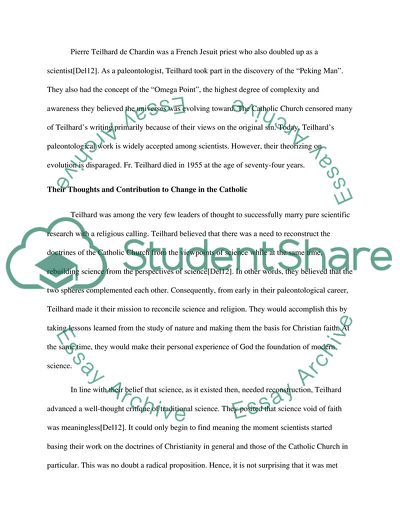Cite this document
(“Father Teilhard de Chardin, a Jesuit priest Research Paper”, n.d.)
Retrieved from https://studentshare.org/religion-and-theology/1666770-father-teilhard-de-chardin-a-jesuit-priest-his-thought-and-how-it-triggered-a-new-chapter-in-the-catholic-churchs
Retrieved from https://studentshare.org/religion-and-theology/1666770-father-teilhard-de-chardin-a-jesuit-priest-his-thought-and-how-it-triggered-a-new-chapter-in-the-catholic-churchs
(Father Teilhard De Chardin, a Jesuit Priest Research Paper)
https://studentshare.org/religion-and-theology/1666770-father-teilhard-de-chardin-a-jesuit-priest-his-thought-and-how-it-triggered-a-new-chapter-in-the-catholic-churchs.
https://studentshare.org/religion-and-theology/1666770-father-teilhard-de-chardin-a-jesuit-priest-his-thought-and-how-it-triggered-a-new-chapter-in-the-catholic-churchs.
“Father Teilhard De Chardin, a Jesuit Priest Research Paper”, n.d. https://studentshare.org/religion-and-theology/1666770-father-teilhard-de-chardin-a-jesuit-priest-his-thought-and-how-it-triggered-a-new-chapter-in-the-catholic-churchs.


